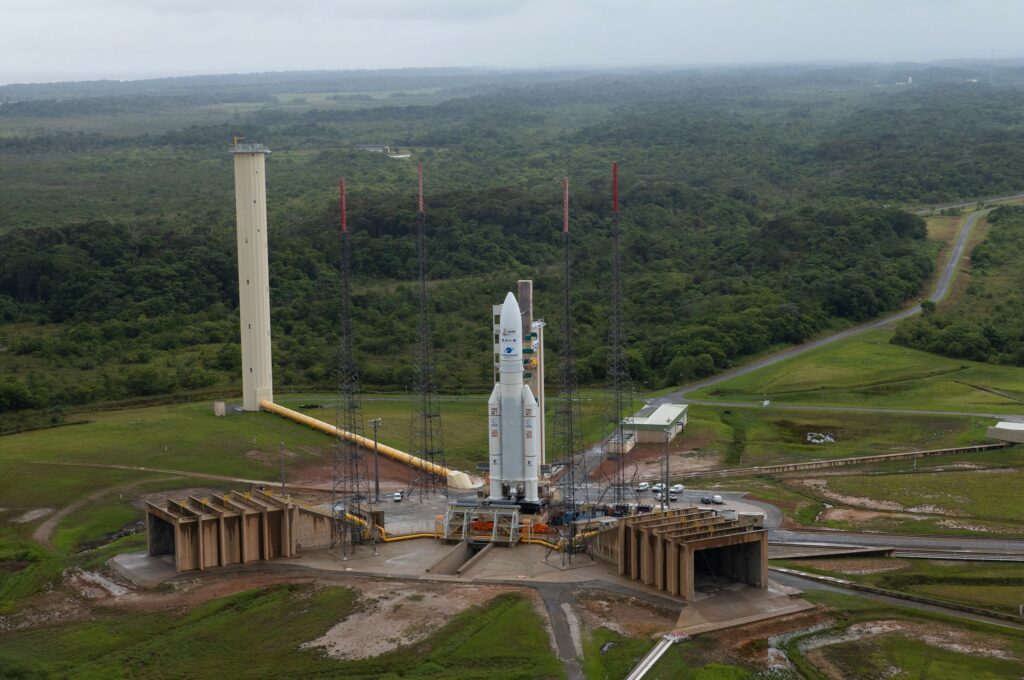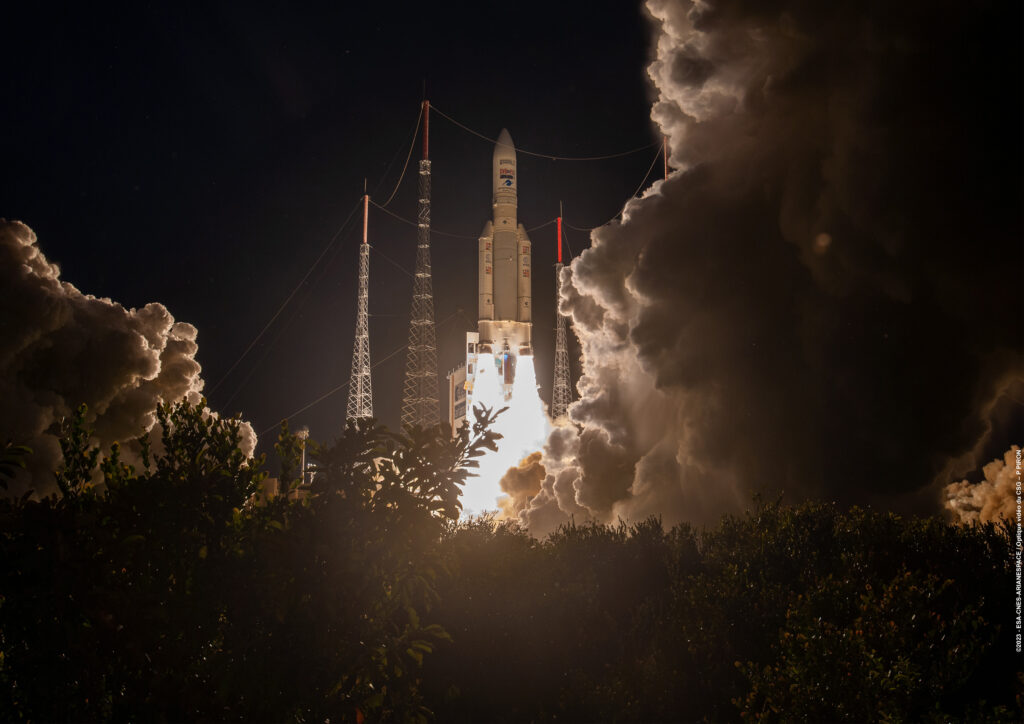On July 6, an Ariane 5 rocket was launched from the Kourou cosmodrome in French Guiana. It became the last in the history of the famous carrier.
Main workhorse of ESA
The Ariane 5 rocket was developed by Arianespace Concern for the needs of ESA. It had a two-stage design and was equipped with two side solid-fuel boosters. Ariane 5 was launched exclusively from the territory of the Kourou cosmodrome in French Guiana, where, due to its proximity to the equator, it could maximize the effect of additional speed given to the launching rocket by the rotation of the Earth.

The first flight of the Ariane 5 took place in 1996. After the discontinuation of its predecessor Ariane 4 in 2003, the new rocket became the main workhorse of ESA for the next twenty years.
Ariane 5 has been modified several times. Its most powerful version could carry over 20 tons of cargo into low Earth orbit and 10.8 tons into geotransfer orbit. Curiously, the rocket was certified for manned missions. At the time of development, it was planned to be used to launch the European Hermes spacecraft. But the project was closed, and therefore Ariane 5 never sent people into orbit.
Final flight of Ariane 5
In the middle of the last decade, ESA decided to switch to the new Ariane 6 carrier. After that, production of the Ariane 5 was gradually phased out. The last remaining copy of the rocket was launched on July 6. It successfully launched two communications satellites into orbit.

Now the operation of Ariane 5 has been completed, we can summarize its final statistics. For 27 years, the rocket flew into space 117 times. 112 missions were successful, two ended in accidents, three were classified as partial failures. Ariane 5 had the honor to send a number of iconic spacecraft into space. Among them are the XMM-Newton, Herschel and James Webb telescopes, as well as the Rosetta, BepiColombo and JUICE interplanetary probes.
It is worth noting that the launch of the latest Ariane 5 has put Europe in a difficult position. The fact is that the new Ariane 6 rocket was originally supposed to debut back in 2020. It was assumed that Ariane 5 and Ariane 6 would be operated jointly for some time.
But due to various problems, the commissioning of the Ariane 6 is constantly shifting. At the moment, it is scheduled for 2024. At the same time, due to recent problems in tests, another European Vega-C rocket will also return to flights no earlier than 2024. Thus, after the launch of the last Ariane 5, Europe was left without its own means of delivering cargo into orbit at least until next year.
Follow us on Twitter to get the most interesting space news in time
https://twitter.com/ust_magazine
